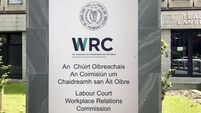Mortgages losses to exceed stress tests
In Mar 2011, the Irish Central Bank commissioned Blackrock International to conduct a comprehensive stress test of the Irish-covered banks.
According to the adverse case scenario — based on 59% peak-to-trough fall in house prices and unemployment reaching 16% — mortgage losses would reach €9bn.
Davy forecasts that eventual mortgage losses will exceed the adverse case scenario and post total losses of between €10bn-€11.5bn on the basis that peak-to-trough falls in house prices will reach up to 65%.
“That said, these additional losses are manageable given the excess capital left over from the banks’ deleveraging requirements, with just €1bn used of the €9.5bn injected to meet discounts as banks sold non-core assets. However, risks to our view are a greater incidence of tactical arrears, bankruptcy or buy-to-let liquidations that drive down property prices,” the report said.
The future health of the banks depends on how they deal with the mounting arrears problem over the short term. Irish banks may be well capitalised, but if the markets believe that they are holding large mortgage losses on their balance sheets, then the banks will not be able to secure future funding, the report said.
At the end of March this year, there were a total of 78,000 residential mortgage holders or 10.2% of all mortgage holders, in arrears of 90 days or more. A quarter of all buy-to-let mortgages are now in arrears. Davy forecasts that arrears on owner-occupier mortgages will increase from 13.4% of overall value to peak at 16.5% in 2013.
Arrears on buy-to-let mortgages are forecast to peak at 38.4% of overall value in 2013 because many of these mortgages originated in 2007 and were interest-only repayments for the first five years. Principle payments kick in this year.
So far, measures taken by the banks to deal with arrears have had very had very limited success, the report notes. Close to half of all restructured loans remain in arrears of over 90 days.
Banks are now “piloting” new forbearance measures, including split mortgages, trade-downs and voluntary sales, which fall well short of principle forbearance, and consequently their ability to improve loan performance will be limited. Moreover, the proposed personal insolvency arrangement also falls short of debt forgiveness.
“The key issue remains whether credible long-term solutions to non-performing loans will be delivered or if both the personal insolvency arrangement and the banks’ forbearance measures merely delay and tie up debtors in unsustainable loans.”
The report’s authors argue that, in view of the level of mortgage arrears among the Irish banks, there has been an extremely low level of debt writedowns and repossessions. But regardless of which forbearance measures are adopted by the banks, the level of repossessions are set to increase. Because of the personal insolvency arrangement legislation, the amount of residential homes repossessed will be limited, but there will be an increased rate of repossessions in the buy-to-let market.
But banks will not be able to liquidate the entire portfolio of buy-to-let houses because planned new mortgage lending by AIB and Bank of Ireland would not be able to absorb the stock of houses coming on the market without further sharp house price falls.
But overall, banks need credible long-term solutions to mortgage arrears difficulties and not to adopt measures that will delay loss recognition and protect capital ratios in the short term.
“Visible solutions to unsustainable loans, which will result in lower capital ratios, are needed in our view.”















